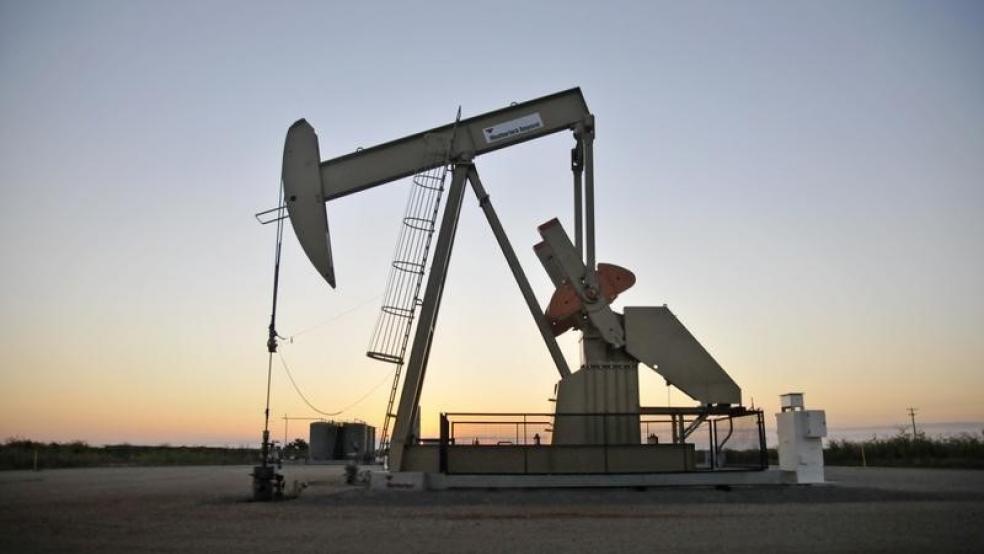October's positive momentum has continued into November, with the major stock averages lifting large-cap stocks into positive territory for the year and the Nasdaq 100 reaching 15-year highs.
The catalyst: A weak manufacturing activity report on Monday once again raised hopes that the Federal Reserve would delay hiking interest rates. Tuesday's rally was fueled by more dovish commentary from European Central Bank chief Mario Draghi, who talked up the risks of persistent deflation and teased the potential for more monetary policy stimulus at its December meeting.
Related: Why the Stock Market Is Partying Like It’s 1999
The result: Ongoing investor interest in beaten down areas of the market such as big oil stocks — a reversal of fortunes that Goldman Sachs last month labelled as being in the top percentile of such moves since 1980. The surge, fueled by panicked, short-covering purchases, is lifting the Dow Jones Industrial Average back toward 18,000 for the first time since July.
Despite crude oil holding steady near $46 a barrel, the Energy Select SPDR (XLE) has punched up and out of its month-long consolidation range to challenge its 200-day moving average, a measure of medium-term trend that the XLE hasn't topped since September 2014.
Why energy? And why now? Partially, because major earnings reports last week, while weak, weren't as bad as expected. Also, if the Federal Reserve and other major central banks are going to wait until inflation starts climbing back toward their targets before tightening policy, they'll need a rebound in energy prices to lift headline consumer price inflation.
That's not happening yet.
Chevron (CVX) reported better-than-expected earnings of $1.09 per share, 33 cents ahead of the consensus estimate. As a result, shares have jumped over their 200-day moving average for the first time since September 2014 — a 40 percent rebound from their August low.
Exxon Mobil (XOM) has broken through congestion near its 200-day moving average, pushing to levels not seen since May. The company reported better-than-expected Q3 results of $1.01 per share on a 37 percent drop in revenues to $67 billion. Analysts at Cowen wrote in a note to clients Monday morning that the earnings beat stemmed from a lower-than-expected tax rate and altered production mix. A focus on expense control has helped as well.
For new money, oil equipment and service providers like Halliburton (HAL) should be the focus. The company reported better-than-expected results on Oct. 19, with earnings per share of 31 cents beating the consensus by four cents. The stock looks to be preparing for a breakout from a long seven-month downtrend pattern with a push above its 200-day moving average, something that hasn't happened since early October 2014.
Should crude oil break out of its recent range, the uptrend in energy stocks will really get going.
Fundamentals are still challenging, but demand from China is perking up and U.S. shale oil output has fallen for seven consecutive months.
Related: The Keystone Pipeline Saga Takes an Odd Turn

Commodity analysts from Societe Generale note that global refinery activity is expected to increase by 1.6 million barrels per day from October to November, and another 0.1 Mb/d from November to December, thanks in part to robust gasoline consumption (lower pump prices encouraging American and Chinese drivers to hit the road).
Other considerations are the path for the U.S. dollar and global central bank easing. The team at Capital Economics is looking for the Fed to hold policy rates near zero through March 2016, which would weaken the dollar and boost commodity prices in general. The People's Bank of China just cut policy rates. And while the Bank of Japan held off on new action on Friday, it opened the door to fresh efforts in January.
Finally, although it's too early to extrapolate a change in trend, the JPMorgan Global Manufacturing PMI swung higher in October in what could be the beginning of the end for the worldwide manufacturing activity slowdown that started in late 2013.
Related: 6 Reasons Gas Prices Could Fall Below $2 a Gallon
If so, combined with a final dose of easy money, this could be enough to motivate a powerful end-of-year stock market rally driven by bounce in oil prices back toward the $60-a-barrel level. That would be bad news for drivers heading into the holiday shopping season, but great news for investors looking for a Santa Claus rally.







